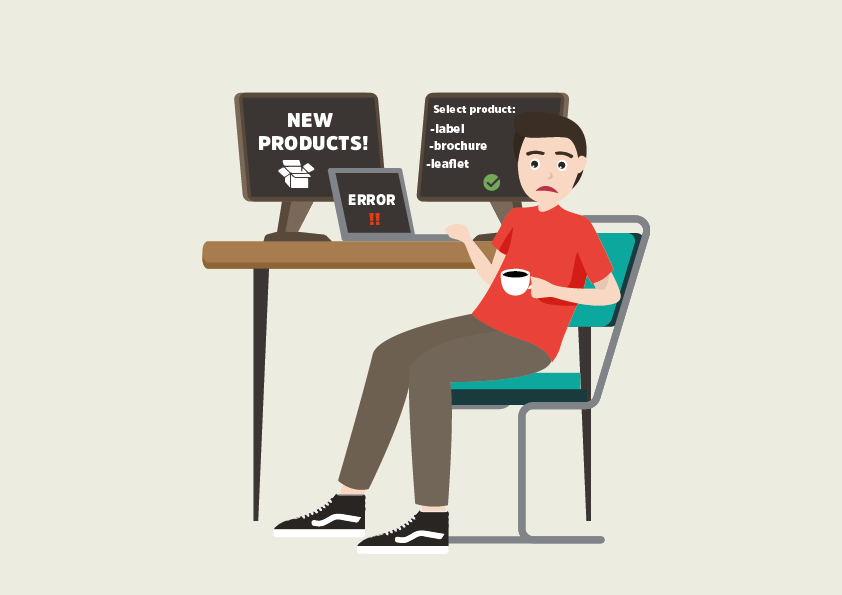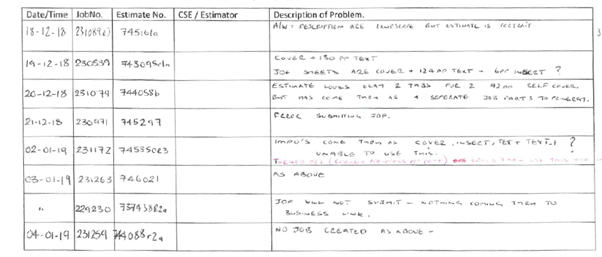The printing industry has seen a surge in product diversification since the start of the pandemic. The sudden introduction of Covid-19 safety measures created a need for products such as social distancing signage, floor decals, workspace dividers and face guards, and many printers stepped up to the challenge and expanded their offering to meet this new demand. Many companies even invested in new equipment to manufacture these new products.
But what some companies have not taken into account is the need to adapt their upstream workflow so they are processing these new products efficiently. These companies are now suffering from bottlenecks in production and inaccurate estimates and job costing reports.

Is this you?
If your company has diversified recently, it might be time to reassess your workflow to see if your company is suffering from reduced efficiency in this way. The biggest problems you may experience are:
- If you’ve added new manufacturing equipment without updating your upstream workflow such as your MIS solution, it means that your estimates are being calculated based on the production costs and capabilities of other pieces of equipment. This will obviously mean that your estimates and job costing reports are not accurate and you may be losing money from your new product range.
- If you’ve diversified into a different discipline of print e.g. from stationery to signage, your MIS software might not even be appropriate for the new product types you are now producing. Your MIS users will be using workarounds to quote for these new products, which will again reduce efficiency and create bottlenecks during production.
How to fix this
The solution to this problem involves three key areas: technology, people, and process. Here’s what you need to do:
- Select one person from each of your departments to join a review meeting of your technology and workflow set-up.
- At this meeting, you should discuss the new products you are now producing and how these have been set up in your MIS solution and other connected technologies e.g. web-to-print and prepress.

Ask questions such as:
- Do we have any new equipment? Has it been added to the MIS solution as a new cost centre with accurate costs and capabilities?
- Does our MIS solution deal with the new product types we are producing?
- Can our imposition solution cope with the new product types?
- Do the new products lend themselves to online ordering and if so, have they been added to our web-to-print solution?
- Has the method of ordering for these products changed? E.g. are we now receiving complex orders via spreadsheets that we have to manually input into the MIS.
- Does our remote approval/preflighting workflow need to change?
- Have our warehouse/inventory needs to be changed because of these new products?
You should also consider the people aspect of this and ask questions such as:
- Do our sales team understand the new products? Can they talk knowledgeably about them?
- Do our estimators understand any additional quoting requirements for these products and how to use the existing software to deliver these?
- Do our prepress team need additional information or training?
Once you’ve identified areas of improvement and produced a plan of action, it’s important for you to introduce an easy process for your people to report on any issues that crop up. When people follow a new process and then encounter a flaw, they tend to develop their own workaround that temporarily fixes the issue without letting anyone know about it. If you want to improve efficiency, you do not want this to happen. So make sure you create a process for them to easily log any issues, so you know what needs to be done to permanently fix the issue. The below is a very simple example of how to go about this manually, though we’ve seen it done very well with online web forms too.

It’s a good idea to hold regular reviews following this process, so you can work on the issues reported. This is actually something we recommend to all printing companies even when they haven’t recently diversified. The more you work on streamlining your workflow, the more efficient your company will be! Your MIS partner should be more than happy to attend these meetings with you, should you want extra support.